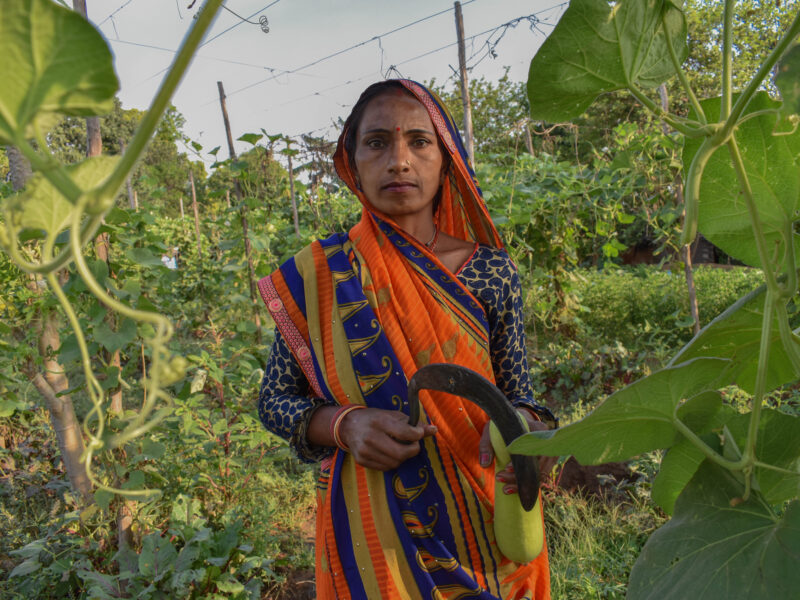When reading the news feels like staring into the sun, restorative narratives provide a lens to bear witness without burning our eyes.
On April 8, the moon will pass directly between the Earth and the sun, shrouding parts of the world in darkness, and creating a tempting void we’re told not to look at directly. It’s a relatively rare but well understood phenomenon, full of portents; the sun and the moon aligning just so—a haloed, shadowy abyss that is astonishing to behold, but harmful to observe without the right protection.
Going out on a limb here: The eclipse is not the only collective experience that’s currently harming us without the right lens with which to see it.
To read the news today is an exercise in patience, in heartbreak, and in fury. It is overwhelming. Each day we bear witness, however shallowly, to rising authoritarianism and declining democracy, to climate crises, to war, mass death, human-made famine. All variables aligning at once to create a total eclipse of despair. Meanwhile, we are expected to continue life as normal, to pretend the void isn’t there, tempting us to lose ourselves in it—all while the people responsible for its existence insist it isn’t there at all. Is it any wonder so many people are losing their bearings? How are we supposed to look at what’s in front of us when it feels like staring directly into the sun?
Trying to engage with what’s happening in the world—in a time where media layoffs are constant, where publications are shuttering, where suppression is rampant and journalists are killed and jailed with impunity—is a fraught exercise, even for those who pride themselves on media literacy and sourcing good journalism. Cowardly headlines, rampant disinformation, and clickbait crap are exhausting people to the point of nihilism. When the NYT is normalizing witness tampering, and Elon is openly promoting race wars and eugenics on X (née Twitter), as 30,000 Palestinians, killed by the IDF, die in passive voice, it can feel maddening trying to figure out where to turn without losing yourself in toxic sludge. Cory Doctorow calls this the “enshittification” of the internet, the transformation of social media platforms from user friendly to user abusive, ultimately harming both its consumers and its bottom line. All the while, endless ads and propaganda continue to short circuit our brains.
None of this means we’re doomed. But it does mean that we can’t allow ourselves to check out. On the contrary, we have to keep finding stories of hope, and truth, and resilience if we want to sustain ourselves in the fight for democracy, our communities, the planet, and each other. The real balancing act we face when absorbing and coping with the news isn’t between observable reality and alternative facts. It is emotional: How do you stay engaged with the world, while also maintaining the hope necessary to stave off nihilism?
It can be hard to see it, but there are still substantive reasons for hope: You just have to put on your protective glasses first.
There’s a backlash to the backlash, and it’s happening all around us. Following the targeted killing of seven humanitarian aid workers from World Central Kitchen in Gaza, President Joe Biden finally threatened to condition US support to Israel. In India, rural women driven home from the cities by COVID are reviving drought-stricken farmland with the help of NGOs, and making a sustainable income for themselves and their families. At last month’s Commission on the Status of Women at the United Nations, the current and all former Special Rapporteurs on violence against women and girls—together with four nations (Democratic Republic of Congo, Sierra Leone, Costa Rica, Antigua and Barbuda)—called for a new global treaty to end gender violence, citing the global crackdown on women’s rights as impetus for moving forward immediately.
Restorative narratives like these are essential: They are a way to help regulate our emotions around the news, rebuild trust in good journalism, and stoke hope for a better tomorrow. This is because these stories are focused on people, resilience, and solutions—communities making progress despite the bullshit. Restorative narratives help us differentiate fact-based trends from moral panics, and genuine threats from trauma responses. They’re a means for collective engagement with the world, but with the right tools to protect us. Because who doesn’t want to see the eclipse? People are traveling from all over the world to get closer to totality, tracing the eclipse’s path from Mexico to Canada. It’s a striking phenomenon, and worth our attention. Just don’t burn your eyes when you see it.



